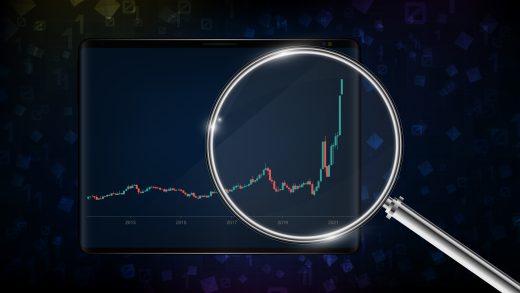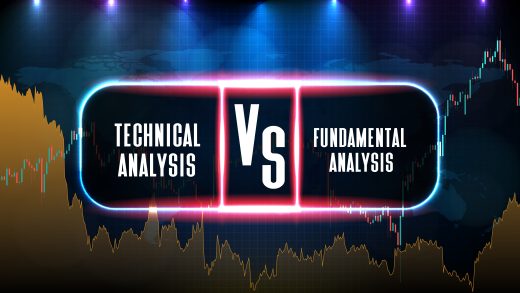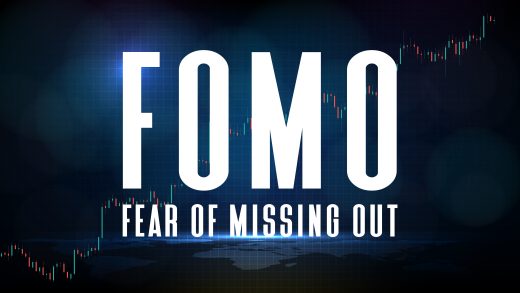The stock market can be a highly emotional and irrational place, and with the explosion of popular trading platforms, it’s easier than ever to get caught up in the hype of the latest hot stock. However, as traders, it’s important to remember that making decisions based solely on fear of missing out (FOMO) can often lead to significant losses. Never was this more true than during the COVID-19 pandemic, in which numerous work-from-home (WFH) stocks saw their valuations explode before crashing back to pre-pandemic levels.
For the purposes of this article, we are going to focus on Zoom Video Communications. Although the company was founded in 2011, it debuted on the NASDAQ in April 2019, roughly one year before the start of the pandemic in the U.S. At the end of its first day of trading, the stock was priced at $62.00, and by January 31, 2020, the stock had climbed to $76.30. Then the pandemic happened. By June, the stock had crossed $200 per share. The stock hit fever pitch in the fall, climbing to an all-time high of $588.84 on October 19, 2020, but it was all downhill from there. When the markets closed on the final day of 2022, the stock sat at $67.74, even lower than its level before the pandemic.
Some traders got lucky. They bought the stock before—or perhaps in the early months of—the pandemic and sold it near its all-time high. But for every lucky seller there was an unlucky buyer who was left incurring disastrous capital losses as the stock price sank lower and lower. You may have been one of those traders. Even if you avoided Zoom, if you’ve been in the market long enough, you’ve likely fallen victim to FOMO losses at some point. I’m no different.
The key question is: how do we avoid these pitfalls in the future? Let’s go back in time to the height of the pandemic and see if we can identify a few concepts that would have steered us away from investing our money into a FOMO stock like Zoom.
Your analysis probably wasn’t wrong. Even if it was, it doesn’t guarantee you’re wrong now.
One of the key inflection points in the Zoom saga took place after the earnings call for the company’s fiscal second quarter of 2021, which took place after market close on August 31, 2020. During the call, it was announced that GAAP earnings per share hit a remarkable $0.63 during the quarter – a staggering 600% jump from the previous quarter. When the market opened the following day, the stock price had shot up over 35% to $439.51. If you were an investor who believed the meager $0.09 earnings per share in the previous quarter couldn’t possibly justify a stock price that high, you probably felt pretty stupid that day, right?
An important idea to remember in investing is that short-term stock price movements neither confirm nor negate the validity of your analysis. There are plenty of times when you will purchase a stock only to see it go down over the next few months, but that doesn’t mean you were wrong to purchase it. Conversely, just because you got in on a stock right before a sharp rise doesn’t mean your purchase was correct. You need years to know whether a stock you purchased was a good investment.
So, even if your analysis after the first quarter earnings call was wrong, and it probably wasn’t, it would be dangerous to simply throw up your hands, disappointed that you missed out on all the gains up to that point, and then buy the stock anyway hoping to at least capture future gains. When new quarterly results are announced, you have to start your analysis again, incorporating the new data.
One method I use to quickly justify whether an investment is even reasonable enough for a full analysis is to figure out what level of earnings the stock would need to have a P/E ratio of 15, which is at the very upper end of what I believe to be reasonable for a stock with consistent earnings but little growth. If the growth rate in earnings necessary to have this P/E ratio is achievable, then I move on to doing a full analysis. This calculation is very simple: just divide the current stock price by 15.
As mentioned before, after the second quarter earnings call, Zoom had reached a stock price of $439.51, which would require earnings per share of $29.30 to even be considered a worthwhile investment. If we were to annualize Zoom’s second quarter earnings ($0.63 x 4 = $2.52), it would require a compound annual growth rate of at least 63.3% for five straight years to reach that level of earnings, and that already assumes that the stock price would not change to provide the investor with any level of capital returns.
A growth rate above 60% is not unheard of, but it is exceedingly difficult to achieve every year for five straight years. Combine with this the fact that Zoom was already a household name and used by numerous companies, organizations, and governments during the pandemic and you would be left wondering exactly how much runway Zoom had left to grow. Another troubling fact for the stock is that competition from Microsoft Teams and other videoconferencing platforms threatened to eat into Zoom’s business.
These facts alone should have discouraged investors from putting too much money into the stock. But when a stock keeps going up despite all the warnings, FOMO starts to set in.
If you’re on the fence, trust your intuition, not your emotions.
When trying to decide whether you want to buy a quickly rising stock, it’s important to trust your intuition and make a decision based on rational analysis rather than letting your emotions make the decision for you. Investing means putting your money to work for you long-term, so short-term thinking is more likely to harm you than help you. Most investors have an intuition when a stock may not be the best purchase. It’s that uneasy feeling you get right before you press the “Confirm Trade” button. Generally, that intuition will keep you out of trouble. You don’t often hear an investor thankful that their emotions guided them to buy a stock they otherwise would have passed on.
Another common psychological trick that some investors fall for is believing that passing on a stock could “lose” them money. It’s not uncommon to hear someone say “I lost thousands of dollars by not investing in so-and-so stock before it skyrocketed.” Not investing in a rising stock is not the same as losing money. Missing out leaves you with exactly the same amount of money you had before. This type of emotion-driven thinking comes naturally, but keeping this mindset will cause you to actually lose money.
You might be able to make money on market irrationality, but that’s dangerous ground to walk on.
Another poor mindset that some investors have is that, even if they know a stock is overpriced, they buy it as it continues to rise and hope to sell it before it starts to go down, hoping that some other investor will be the sucker that ends up with the stock when the bubble finally bursts. This mindset is called the “greater fool” – investors who put money in a bubble are fools hoping that an even greater fool will pay them even more for an asset that is highly overpriced. It’s like playing hot potato with a firecracker – the only way to avoid getting burned is to not play the game at all. To be fair, many investors have successfully made money this way, at least on individual stocks. But if they continue to invest in overpriced stocks, eventually they will be burned. At the end of the day, you have a much greater chance of losing money in a bubble than getting richer.
Let go of sunk costs. Don’t buy the dip.
Perhaps you’ve found yourself to be the greater fool who bought a stock right at its peak. If you’ve already lost money when a bubble has finally burst, there is a temptation to sink even more money into it to lower your average cost basis. Economists have a term for this: the sunk cost fallacy. It is human nature to feel committed to an investment that you’ve put your money in, but human nature loses investors billions of dollars every year. Often, trying to save a losing investment will end up losing you even more as the bubble continues to deflate. Wait until your analysis says that the stock is actually underpriced before you put any more money into it.
Remember that there are a ton of other stocks to choose from.
Finally, it’s important to remember that there are a multitude of other stocks to choose from, and you don’t have to limit yourself to just the latest hot stock. Before putting any money in a risky stock, take the time to research other stocks. You might find one you like even more and which isn’t grossly overvalued at the time. As Warren Buffet said, the most successful investors follow one rule: “Never lose money.” At the end of the day, the most important thing is to have a well-diversified portfolio of quality stocks that aligns with your long-term investment goals.


